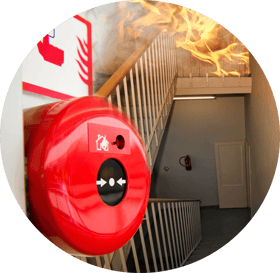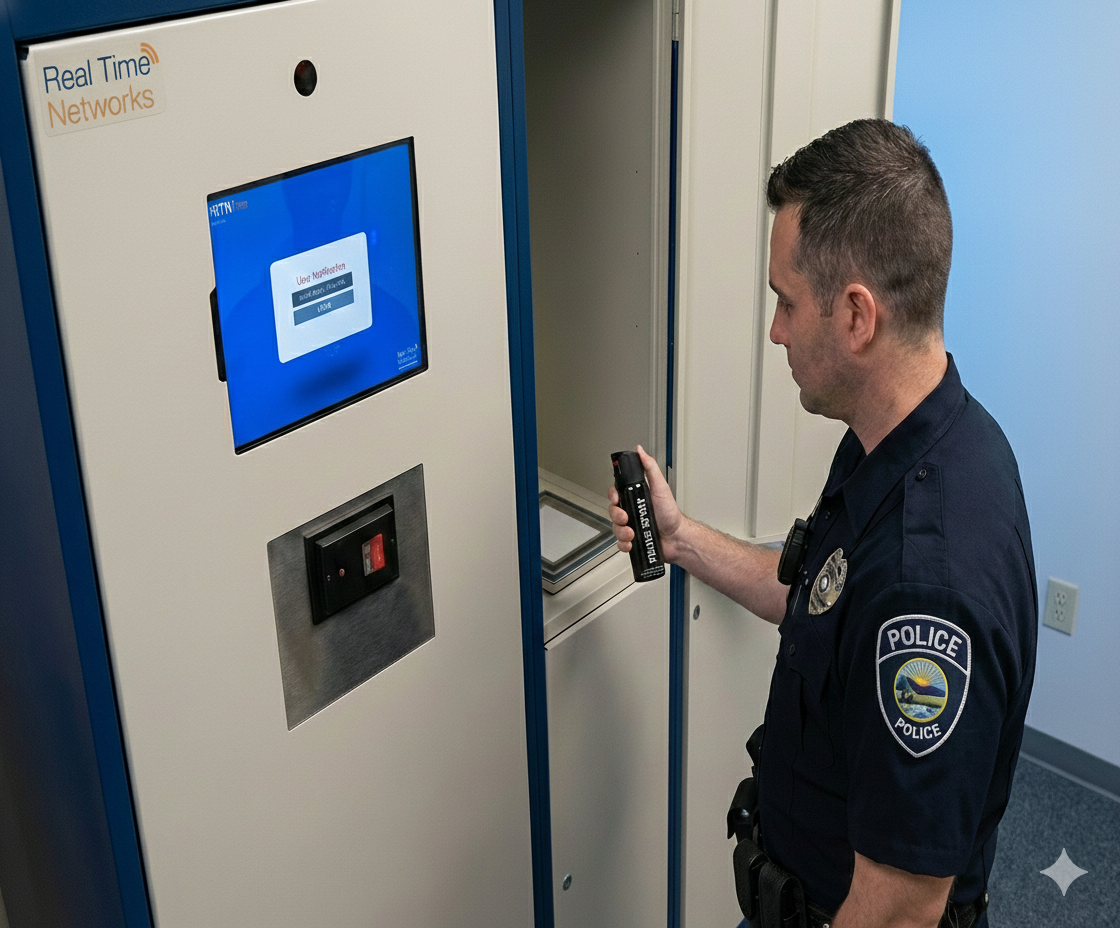We’ve noticed that many UK businesses are updating their workplace safety plans—or their fire and safety plan—right now. Most commonly, they’re either taking advantage of governmental COVID funding before it dries up, reorganizing their fire and safety plan to accommodate a permanent hybrid workforce, or moving into a new building.
Whenever you make significant updates to something as critical as your fire and safety plan, there is always the chance that you’ll inadvertently forget a detail. That is why proper training and drilling are both essential to ensure that the first time you realize you’ve overlooked something is not amid an ongoing evacuation.
In this article, we’ll first review what UK statutes most impact business safety planning. Then, to help you make your planning update go smoothly, we’ll go over eight workplace safety problems we’ve seen many businesses forget to address.
Several Key Statutes Regulate Workplace Safety
Common law has established that employers have a “duty of care” towards their employees. This precedent compels employers to take “reasonable measures” to prevent foreseeable harm to their employees that might occur while carrying out their jobs. It is important to stress that employers do not have a duty to ensure their employees’ complete and total safety, only to take those reasonable measures in the eyes of common law.
Three key factors determine the general level of care an employer must provide under common law:
- The standard expectations of a reasonable company under the law at the time
- The costs and benefits of implementing a given safety measure
- Those costs and benefits balanced against existing common practice and expectations
Beyond that precedent, several sets of governmental regulations also impact what companies must include in their workplace safety plans.
The Health and Safety at Work Act 1974 (HSWA)
The HSWA is “the primary piece of legislation covering occupational health and safety in Great Britain.” It lays out the duties employers have for ensuring the safety of their employees and the public and the duties employees have to maintain their own and each others’ safety.
Dangerous Substances (Notification and Marking of Sites) Regulations 1990 (NAMOS)
NAMOS requires businesses to notify local fire authorities and HSWA enforcement authorities before housing 25 tonnes or more of dangerous substances. NAMOS also sets out signage and emergency planning requirements in addition to the HSWA.
Management of Health and Safety at Work Regulations 1999 (Management Regulations)
The HSE Management Regulations make explicit how employers must manage many health and safety issues under the HSWA. Most importantly, the Management Regulations require employers to conduct risk assessments of their workplaces and work activities. In addition, employers with five or more employees must document the significant findings of the risk assessment.
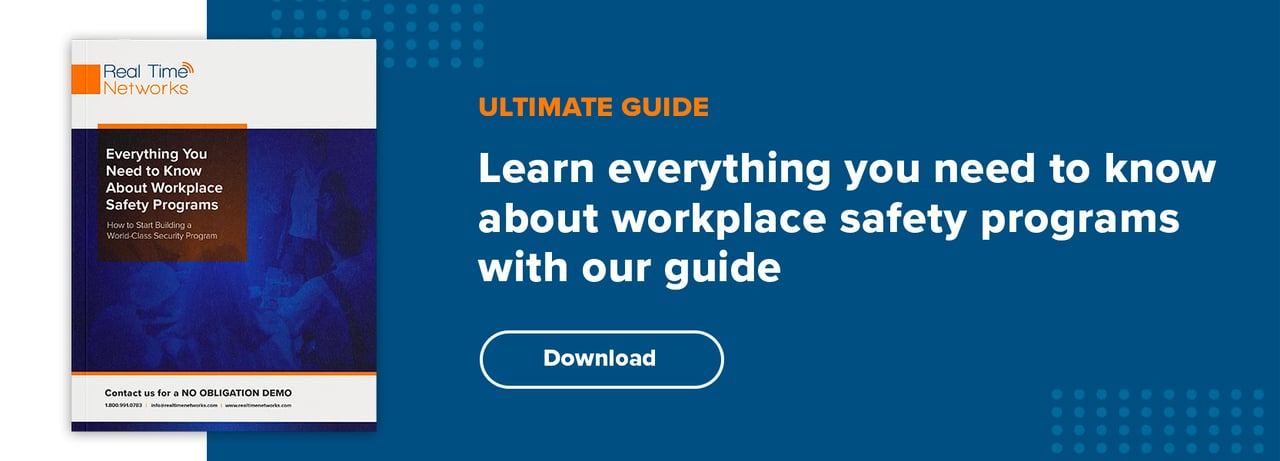
8 Workplace Safety Problems You Want to Avoid
For most employers, meeting the common law requirements and these primary statutes will involve conducting a risk assessment and instituting a few essential safety measures. Only in specific higher-risk industries will more complicated requirements come into play.
If you’re preparing to update your workplace safety program, make sure you avoid these eight problems. With just a little bit of effort up front, you’ll ensure your employees are better protected for years to come.
1. Not documenting an Emergency Action Plan (EAP)
 An emergency action plan—often just called a fire and safety plan—is a document generated by a company that covers all of the roles and responsibilities that employees hold during an emergency and the procedures they must follow.
An emergency action plan—often just called a fire and safety plan—is a document generated by a company that covers all of the roles and responsibilities that employees hold during an emergency and the procedures they must follow.
Some roles you might want to set out in your EAP include:
- An incident controller who is responsible for coordinating with emergency service teams on site
- First aid providers for each muster point who will be provisioned with medical kits
- Designated essential personnel who will ensure critical systems shut down before they evacuate your facility.
Your EAP should also set out these shutdown procedures so that any individual can follow them should essential personnel become incapacitated during an emergency. You should also specify the evacuation routes out of your facility and the muster points where employees should assemble for roll call, first aid, and other recovery activities.
The HSE offers guidance to help you develop a fire and safety plan from the ground up that will meet your company’s needs.
For more emergency preparedness tips, please see our Complete Checklist for Emergency Preparedness in the Workplace.
2. Forgetting about your building’s fire and emergency file
A fire and emergency file is not the same thing as a fire and safety plan. Instead, it is a document prepared by the builder during the construction of a building containing all relevant emergency information about the facility. This file must pass from the builder to the originating owner and onto whoever buys the building from them. However, this does not always happen.
A fire and emergency file provides a detailed record of the fire strategy implemented during the building’s design. A lack of proper fire and emergency file tracking was cited as a systemic problem in a 2018 study on fire safety conducted by the Secretary of State for Housing, Communities and Local Government.
If your company is a resident of a newer building, you should ensure you have access to this file. If you’re a resident of an older building, you may need to generate this document for yourself and future tenants proactively.
3. Only thinking about business hours 
Don’t fall into the trap of only thinking about working hours when developing your workplace safety plans. People can be in your facility at other hours too, and employers have a duty to protect those individuals as well.
Include roles, responsibilities, and procedures for protecting night workers, shift workers, and anyone who might come in by themselves on weekends or holidays. Procedures designed for these scenarios may need to look very different, as your company will likely have a much smaller number of people on site. That might make it easier to evacuate all of them quickly, but you also have fewer individuals available for different emergency response roles.
4. Conducting an evacuation without emergency wardens
Before your next evacuation drill or safety training session, make a point of assigning responsible employees to be emergency wardens—or emergency managers—for each floor or department in your company. The exact number you need varies with the size and complexity of your facility.Emergency wardens are responsible for ensuring that other employees in their assigned area evacuate orderly and efficiently. You may also give wardens essential closedown duties to ensure that any necessary equipment shutoffs or other critical activities are addressed before the building is fully evacuated.
5. Forgetting about employees at elevated risk 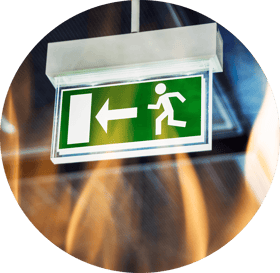
Your plan must also include measures for protecting employees and members of the public at elevated risk. That can consist of procedures for assisting:
- Lone workers or workers in isolated locations
- Individuals working near ignition sources or chemical hazards
- Children on-premise or parents with infants
- Elderly, ill, or disabled individuals
Each of these groups will likely need special protections and have special evacuation needs. Train your emergency wardens to handle them and provide them with the proper tools to monitor these individuals’ safety.
6. Letting evacuation routes become outdated
Floor plans can change unexpectedly. For example, something as simple as a new cabinet in the hallway might create an unnecessary bottleneck during evacuations. As part of your emergency drilling, ask your wardens to monitor traffic flow and note whether new obstacles or construction have impacted your evacuation routes or shutdown procedures.Ideally, you want more than one escape route out of your facility, but that is not always possible. And no clutter or obstacles should be allowed near any of your fire exits.
7. Not updating your EAP for new risks
Much like you need to monitor evacuation routes, you should periodically conduct new risk assessments to understand potential unknown risks in your workplace. There are many ways you could perform these follow-up assessments, but a straightforward method recommended by the HSE is to start by making simple drawings of your premises, roughly to scale.
You should not make these drawings from memory. Instead, instruct your emergency wardens to go on site. Include in the drawings any relevant features, like staircases and doorways. Then train your wardens to note all relevant dangers, such as fire ignition sources, chemical storage, ovens, space heaters, and other portable hazards that might not appear in original plans.
8. Neglecting employee safety once they leave the premises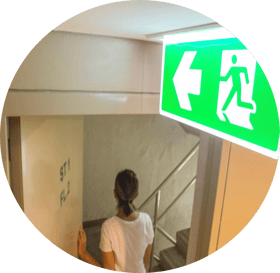
Identify assembly points—also called muster points—where you want employees to assemble once they have left your building during an evacuation. When reviewing existing plans, confirm that your selected muster points are still large enough to accommodate everyone in your building. In addition, muster points should be far enough from your building that assembled employees are not in danger of falling debris, smoke, or heat. You must also place muster points to allow emergency service teams enough room to operate.
Train emergency wardens to conduct roll calls at those muster points. Roll calls help verify who is confirmed safe and who might still be at risk in your facility. Wardens should be ready to share this information with emergency services as soon as possible.
Enhance Your Workplace Safety Program with Safety Technology
Emergency evacuations can be chaotic, even in the best possible scenarios. Consider whether using automated workplace safety systems might simplify your evacuations and drilling.
For example, an emergency mustering system can automatically track the location of at-risk individuals in your building. Then, as employees reach muster points, the system can automatically record them safe in your digital roll call. With this support, your emergency wardens can focus on first aid and coordinating with emergency service teams instead of ticking off names on a sheet.
Preparation Pays Off
A small amount of extra preparation and investment today can pay off for years to come. Emergency mustering systems help streamline your workplace safety programs, make your emergency wardens’ jobs more straightforward, and keep all of your employees safer.
Subscribe to our blog

Jay Palter
Vice President of Marketing & Partnerships
